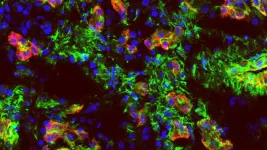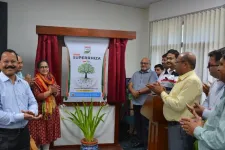Optoelectronics detect or emit light and are used in a variety of devices in many different industries. These devices have historically relied on thin transistors, which are small semiconductors that control the movement of electrons and photons, made out of graphene and other two-dimensional materials. However, graphene and these other materials often have problems with band gap opening and other shortcomings that have researchers searching for an alternative.
When treated with a method called the Lewis acid treatment, palladium diselenide is a possible solution to satisfy the needs of optoelectronic devices.
Research analyzing this method was published in a paper in Nano Research on November 24.
Prof. Dr. Mark H. Rümmeli, ERA Chairs professor at the Technical University of Ostrava (VSB-TUO) stated, "Palladium diselenide exhibits unique physical properties, including a tunable band gap and impressive device performance. Notably, it demonstrates long-term stability in ambient air without the need for additional packaging."
Taking inspiration from semiconductor physics, the researchers considered how doping might alter palladium diselenide to improve its performance. Doping is the intentional introduction of impurities to a material, resulting in three types of materials: pristine, p-type doped, and n-type doped. When a p-type doped material and an n-type doped material touch, they create a p-n junction. This junction is important for optoelectronic devices, because it is where light to electron and electron to light conversion occurs.
To create p-type doped and n-type doped palladium diselenide in a controlled fashion, researchers used the Lewis acid treatment. “The controlled level of doping can make palladium diselenide have a different energy bandgap, which enriches a toolkit or library of materials for the selection and design of the p-n junction,” said Dr. Hong Liu, a professor at the State Key Laboratory of Crystal Materials at Shandong University in Jinan China. “The Lewis acid treatment can introduce the substitution of the palladium atoms (by tin from tin chloride, one type of Lewis acid) in the palladium diselenide. We found a data fitting equation between the doping level versus the concentration of Lewis acid, which may inspire people to manipulate more p-type doped two dimensional materials.”
In order to test this method, researchers prepared a pristine film of palladium diselenide. The film was then modified using the Lewis acid treatment. After the initial Lewis acid treatment, the lattice structure of the palladium diselenide film was unchanged, but emerging peaks of tin, palladium, and selenium were confirmed using imaging. These peaks proved that tin could be used as a p-type dopant. Additional tests of different concentrations of tin chloride showed how the threshold voltage of the palladium diselenide could be controlled depending on the concentration of the tin chloride. These guidelines can be applied for future doping of palladium diselenide using Lewis acids. It could also provide a blueprint for how to do similar testing on other semiconductor materials.
Looking ahead, researchers will plan how to scale the processing of these two-dimensional materials. “We will demonstrate the exciting applications of p-type doped palladium diselenide in several electronic components, such as field-effect transistors, photodetectors, and light emitters. We plan to try to optimize the semiconductor doping method, which can be readily adopted by the industrial standards and could be employed in the semiconductor industry for mass production in the near future. Our ultimate goal is to apply this technique in wearable and flexible electronics by integrating the palladium diselenide-based transistors and photodetectors with polymer-based strain sensors in flexible substrates, which result in a smart biomedical system for human healthcare monitoring applications,” said Dr. Jinbo Pang, a professor of chemistry and materials science at the University of Jinan in Jinan, China.
Other contributors include Jiali Yang and Dr. Weijia Zhou at the University of Jinan; Dr. Thomas Gemming at the Leibniz Institute for Solid State and Materials Research Dresden; Dr. Yu Liu at Soochow University; Dr. Jinshun Bi and Dr. Hao Jia at the Chinese Academy of Sciences; Dr. Alicja Bachmatiuk at the PORT Polish Center for Technology Development; En-Yang Wang and Dr. Shu-Xian Hu at the University of Science and Technology Beijing; Dr. Chongyun Jiang at Nankai University; Dr. Shirong Huang and Dr. Gianaurelio Cuniberti at the Technische Universität Dresden.
The Natural Science Foundation of Shandong Province for Excellent Young Scholars, the State Key Laboratories of Transducer Technology fund, the National Key Research and Development Program, the National Natural Science Foundation of China, the Major Innovation Project of Shandong Province, the National Science Foundation China, the Taishan Scholars Project Special Funds, the Foundation of State Key Laboratory of Biobased Material and Green Papermaking, the National Science Center and the Czech Republic under the ERDF program “Institute of Environmental Technology—Excellent Research,” and the Sino-German Research Institute supported this research.
##
About Nano Research
Nano Research is a peer-reviewed, international and interdisciplinary research journal, publishes all aspects of nano science and technology, featured in rapid review and fast publishing, sponsored by Tsinghua University and the Chinese Chemical Society. It offers readers an attractive mix of authoritative and comprehensive reviews and original cutting-edge research papers. After 15 years of development, it has become one of the most influential academic journals in the nano field. In 2023 InCites Journal Citation Reports, Nano Research has an Impact Factor of 9.9, the total cites reached 35645, ranking first in China's international academic journals, and the number of highly cited papers reached 229, ranked among the top 1.5% of 8786 academic journals.
About SciOpen
SciOpen is a professional open access resource for discovery of scientific and technical content published by the Tsinghua University Press and its publishing partners, providing the scholarly publishing community with innovative technology and market-leading capabilities. SciOpen provides end-to-end services across manuscript submission, peer review, content hosting, analytics, and identity management and expert advice to ensure each journal’s development by offering a range of options across all functions as Journal Layout, Production Services, Editorial Services, Marketing and Promotions, Online Functionality, etc. By digitalizing the publishing process, SciOpen widens the reach, deepens the impact, and accelerates the exchange of ideas.
END





